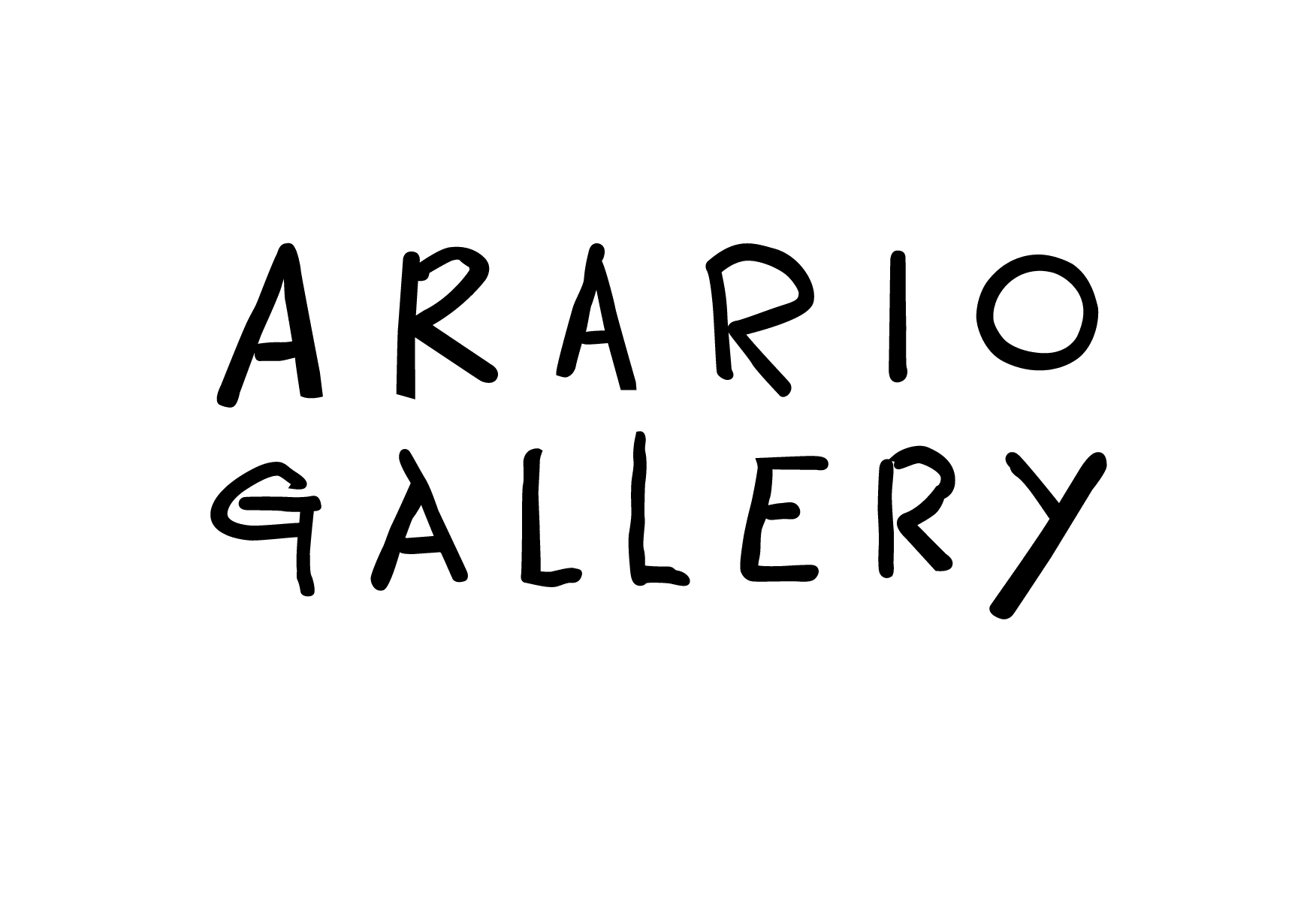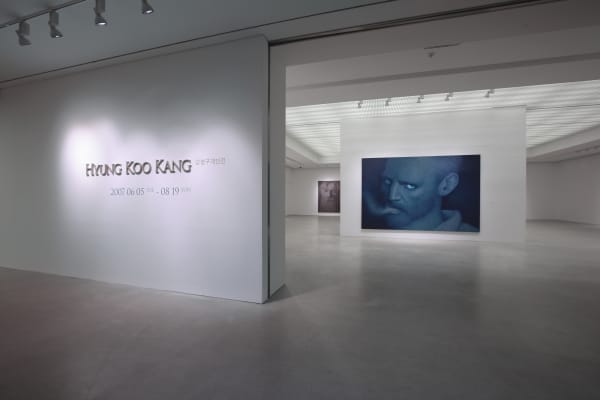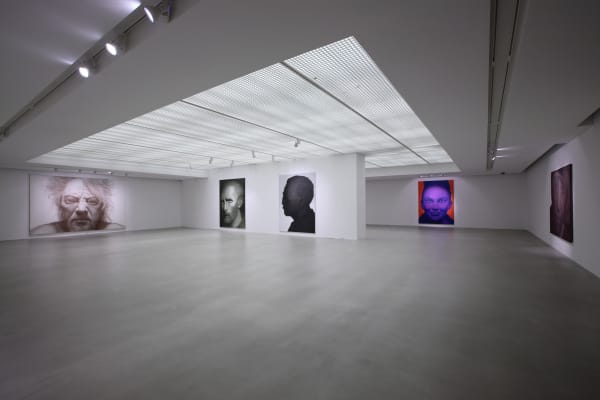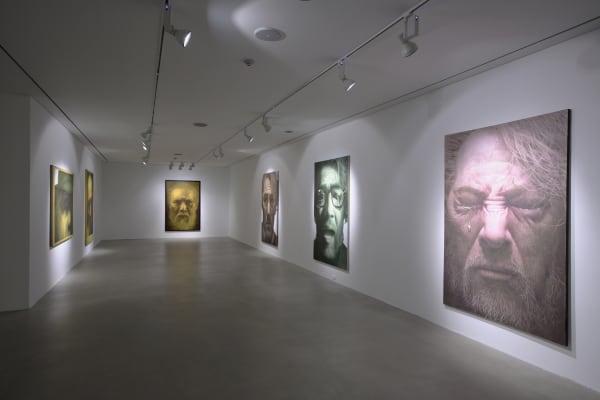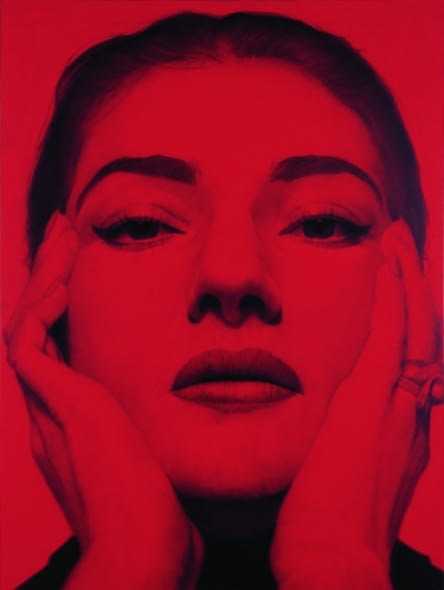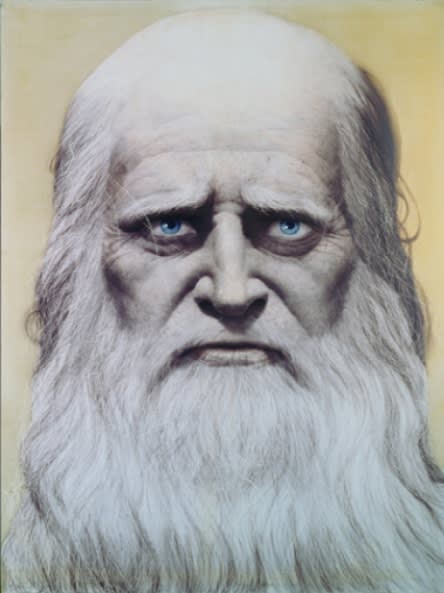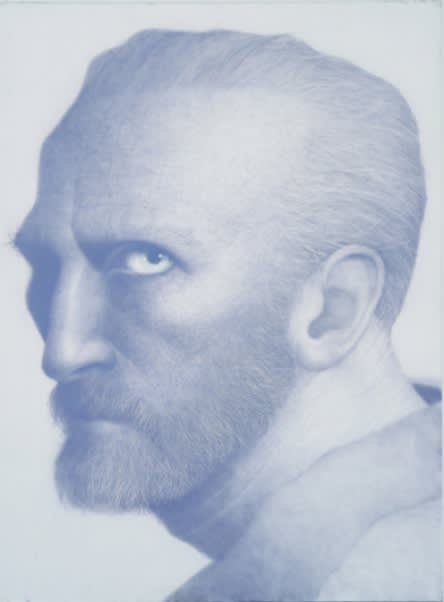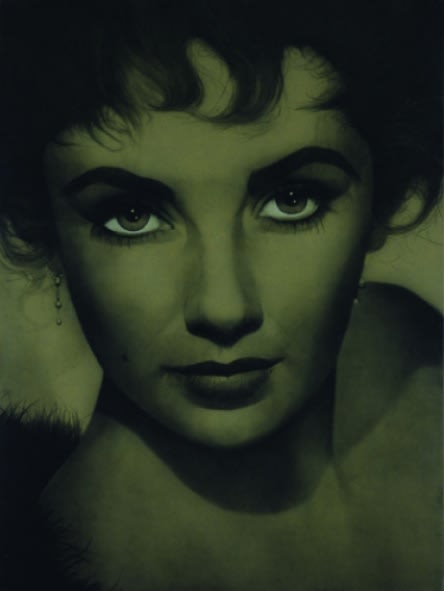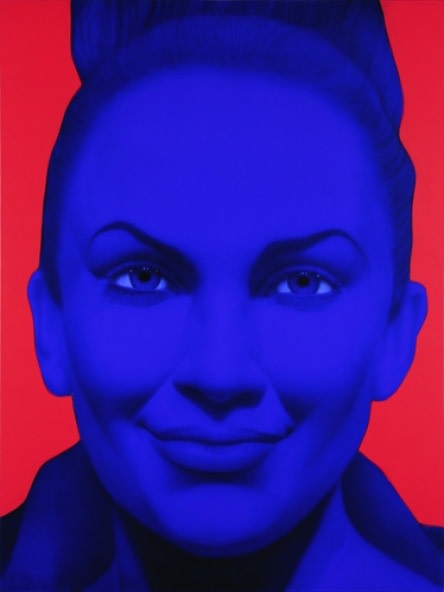KANG Hyungkoo: The Gaze
Period | 5 June– 26 August, 2007
Venue | Arario Gallery Cheonan
Works | 60 pieces including installation and painting
Opening Reception | 6pm, 5 September, 2007
Kang’s solo exhibition at Arario Gallery is a meaningful event for him. He is not only displaying his decades worth of artworks including his self-portraits, portraits, caricatures and sculptures etc., but this exhibition stands at a crossroad for him, that is a moment of a new departure ahead. After years in the paint-filled studio, the peoples’ faces in Hyung Koo Kang’s portraits are now ready to come out to the world and ‘gaze’ at its audiences.
Hyung Koo Kang’s Facial Portraits – The Gaze
People have always had the desire to capture beautiful scenery or an object they want to remember onto a visual surface that allows them to hold onto it forever. And back before the advent of photography, paintings were the only means to capturing such a moment still in time. This is perhaps the reason why nobility and royalty in the olden days used to have their portraits painted leaving a pictorial record of their images to their descendants. Nowadays, portrait paintings have been replaced by portrait photography, and in some ways, one might argue that hotography has opened up the genre of portraits to include more than just a strict replication of a person’s image. Portraits in modern art, in other words, tread far beyond just accurately representing a person, rather they invite a new way of communicating a wholly different type of meaning to its audiences.
Artist Hyung Koo Kang has spent over twenty years painting portraits on huge 2square meter plus sized canvases. His series of facial portraits do not reveal any type of backdrop or environment but focus on depicting the subjects’ faces in great detail. Staring at such paintings by Kang, one cannot help but realize that the face inside the portrait has its gaze fixed straight on the onlooker. The fixing of the gaze occurs in any meeting of two people, and that phenomenon actually takes place as one looks upon Kang’s portraits. Of course in real life, one rarely would stare at another person whom they do not already know very well. However, upon meeting Kang’s portraits, the audience is drawn to stare into the eyes of a stranger for a long time, an act which elicits a completely different experience and suggests a new method of communication. The gaze that occurs upon meeting Kang’s portraits is actually a mutually communicative reaction between the subject in the portrait and the audience member, and is therefore shaped into a variety of experiences unique to each audience member.
So, why is it that Kang is so obsessed with faces? Seeing the sheer number of facial portraits by Kang has caused me to wonder. And the answer, I believe, lies perhaps in the meaning that the human face holds to us. They say that a person’s face embodies one’s life. Every expression that is made by a person causes the lines and wrinkles to gather a particular way, and each and every one of those lines and wrinkles form the impression of one’s face. And such an impression that is created in a person’s face is often a reflection of the person’s character and perhaps even his or her inner thoughts. That is probably why we tend to draw our attention to peoples’ faces first upon meeting someone. In a person’s face, we not only gather a lot of information about that person, but the face elicits an emotional response and reflects on how we feel. Kang’s subjects in his portraits, however, are always expressionless. And Kang does so to eliminate the emotional effect that a facial expression could cause in the audience, so as not to interfere with the audience’s reading of the subject’s inner image. This is because one can get the most accurate reading of a person’s true inner image when the face is void of expressions, that is in its most neutral state. As such, Kang is presenting to us the opportunity to read, in these expressionless facial portraits, the subjects’ inner image as well as their lives.
Kang’s subjects in his facial portrait series can be divided into three types: self-portraits, celebrity portraits and unidentified subjects. And it was only after a long break when Kang returned to work on his art that he began his series of self-portraits. His self-portraits were probably the most appropriate avenue to determining the direction of his facial portraits series. Expressing his life through his self-portraits, he was probably able to find his own identity as an artist. And now, through the variety of his images, Kang is poised to meet and share in feeling with his audiences. After the period in which Kang worked on his self-portraits, he began to paint various celebrities such as politicians, movie stars and artists etc. who defined a period in time. Amongst this series were portraits of Marilyn Monroe, Abraham Lincoln, Andy Warhol etc., for example. And audiences are given, through Kang’s paintings, the opportunity to meet celebrity figures whom they have never met in real life. The imagined portrait of Marilyn Monroe as an old woman brings a different kind of enjoyment to the audiences. And finally, Kang has painted interesting subjects such as an ordinary black child who still seems to leave such a strong image because of the way the child is depicted, not to mention an old man whose face is full of wrinkles. Kang’s portraits as such provide an opportunity to meet and share in feeling with the variety of his subjects.
Kang’s facial portraits series reminds us of works by the representative modern hyper-realist painter Chuck Close. Since the 1960s, Chuck Close has been painting human faces on large canvases using hyper-realist techniques, to the extent that the painting is perhaps even more realistic than a photograph of a human face, and in that sense, Kang’s paintings have a commonality with Close’s works. However, as Chuck Close has stated about his own paintings, “my goal is to transfer photographic information into painted information” and as such has devoted all of his efforts to the process of faithfully transferring the photograph into a painting. Hyung Koo Kang, on the other hand, has made his process into a pursuit of his own color rather than simply transferring photographic information. For example, he uses strong colors on his surfaces so as to highlight colors before shapes and images. Furthermore, he tends to emphasize the eyes and exaggerate facial wrinkles, distorting the real person’s facial image. And it is through such distortions that Kang crosses beyond the realm of representation and implicates a wholly different kind of meaning to the portrait genre.
Hyung Koo Kang appeared in the art scene rather late in his life, surprising quite a many people. It is hard not to wonder then just what kind of life Kang has lived. What traces of his life were revealed in his self-portraits? Kang attended art school during the 1970s when realism took center stage in the art world. Indeed he reminisces about his years in school where he would spend most of his time essentially copying the detailed depictions of hyper-realist paintings by artists such as Chuck Close, Salvador Dali and Leonardo da Vinci etc.. However, Kang would always finish up his works by somehow changing the hyper-realist depiction of the original. For example, Kang re-created Millet’s ‘The Gleaners’ on a huge canvas and replaced the barley with money, turning the gleaning women into women picking up money. In conjunction with such paintings, Kang continued to produce unconventional works such as those utilizing coins as its object, adding installations to his works etc.. Such projects continued to keep Kang at a distance from the academic trends of the time, therefore causing Kang to increasingly be seen as a heterodox which in turn made his debut into the art world rather bumpy. At that time, the only opportunity to entering into the art world was to join the small community of artist competition and the times were such that all the predecessors at the forefront of which led to Kang’s works had a rather difficult time being accepted.
Since then, Kang walked the road of a regular salary man, then later to managing a gallery, which eventually led to his large facial portraits 30 years later. Kang had returned to start working on his paintings was 2 years after he had left his job at the gallery. And over the ten years since his move into his current studio, between 1992 to 2001, he faithfully worked on his art without ever showing his works to the public at all, and one can easily say that this body of work we see before us now is an outgrowth of his passion and persistent work over all those years. Including all of Kang’s self-portraits, his entire body of work consists of some 200 pieces. And having completed such an intense time of working on himself, Kang has continued to fill huge exhibition spaces with even more paintings in addition to those he had released since his first debut show.
Hyung Koo Kang is one artist that exemplifies the famous saying that ‘being an artist is about overcoming oneself’ and that is because he came out to the world after having gone through an intense period of self-examination. Kang would sleep no more than four hours a night and spend months in his studio, often saying that 24 hours in a day is not enough. One might speculate that his intense drive is a result of his desire to over compensate for lost times, as he had come to his works rather late in life, but the fact that his works are pure paintings which require intense labor and hard work, not to mention that he only paints on huge canvas surfaces shows Kang’s exemplary attitude of what it really means to be an artist. His studio is covered with paint dust from airbrushing and the aerosols, all over the floors, furniture, cupboards and even on the ventilation fan. And in this exhibition, Kang will be showing such objects from his work studio as an installation, revealing the self-combat he had gone through over the last twenty years
What all of Kang’s such efforts has borne is superior technique. In depicting the details of the human face, he uses aerosol cans to show the smoothness of the skin, then before the paint dries, uses a q-tip or a brush to paint the details of even the smallest of wrinkles, peach fuzz, and pores. What is so surprising is that while Kang is using oil here on his paintings, his portraits, unlike the usual genre of self-portraits in oil, have a very clean feeling much like a water color painting that has been painted many times over. However, even with such a water painting-like quality to the portraits, the details of the wrinkles and peach fuzz are depicted with such density. Of course the benefits of using oil is that the painter can paint over whatever is below the surface as many times as one desires, until the painting is finally complete. However, despite such conveniences of the medium, Kang tends to utilize his single stroke technique, which he has developed over many years, often very quickly filling his large canvases with paint. In his effort to increase his efficiency in painting, Kang would tie his right arm to his body and practice painting with his left art, so as to become an ambidextrous painter. He would also carry a concave lens with him at all times so that he could always examine his huge canvases from a faraway distance and ensure the overall image and colors are balanced just right. The generative power behind such intense work ethic is truly the fruits of his persistent labor over a very long period of time.
Most artists over the age of 50 are considered veteran artists, but such a title does not seem to befit Hyung Koo Kang. In fact, his level of energy and passion for his work seems to surpass that of most young artists today. He still works in his studio every day in the midst of all the aerosol dust of paint pursuing new techniques and new subjects. According to Kang, the moment an artist’s works are determined to be in one direction and ceases to evolve is a moment of calamity for an artist. He says that he has spent many of his years working on facial portraits, but he can switch to a different subject at any given time. And when I asked him how he determines when a painting is actually complete, he said that the moment he feels that the person in the portrait is ‘gazing’ at him, he lets his hands go from the painting. Indeed the process of the ‘gaze’ occurs in the work’s final stage, that is the meeting of its audience.
Kang’s solo exhibition at Arario Gallery is a meaningful event for him. He is not only displaying his decades worth of artworks including his self-portraits, portraits, caricatures and sculptures etc., but this exhibition stands at a crossroad for him, that is a moment of a new departure ahead. After years in the paint-filled studio, the peoples’ faces in Hyung Koo Kang’s portraits are now ready to come out to the world and ‘gaze’ at its audiences.
